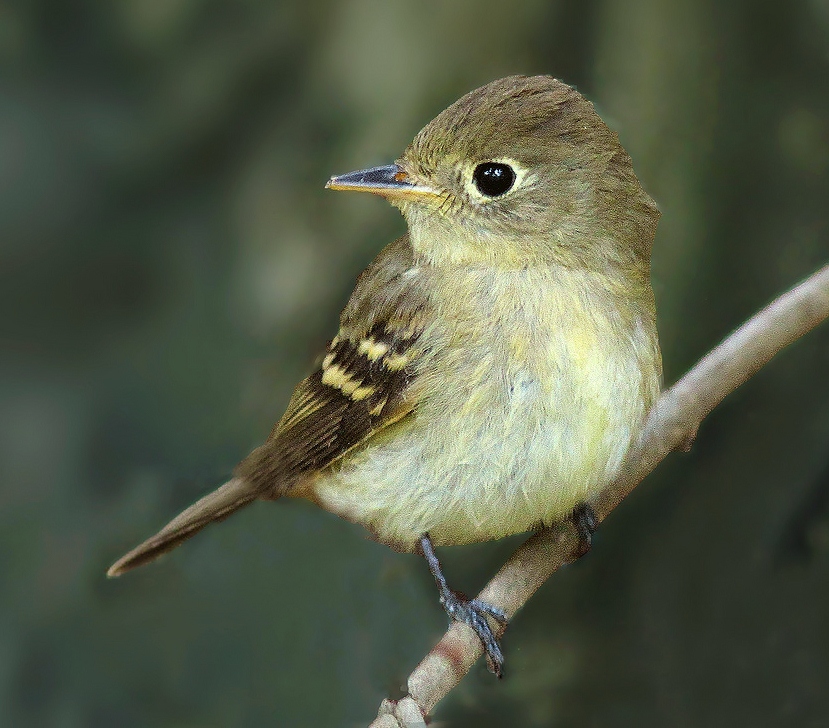 |
| Photo by Anay Tarnekar (Flickr) |
Common name:
Pacific-slope flycatcher (en); papa-moscas-do-Pacífico (pt); moucherolle côtier (fr); mosquero del Pacífico (es); feuchtwald-schnäppertyrann (de)
Taxonomy:
Order Passeriformes
Family Tyrannidae
Range:
This species breeds along the Pacific coast of North America, from south-eastern Alaska down to Baja California. They migrate south to winter in southern and western Mexico.
Size:
These birds are 14-17 cm long and have a wingspan of 20-23 cm. They weigh 8-12 g.
Habitat:
The Pacific-slope flycatcher breeds in humid coniferous forest, pine-oak forest, and dense second-growth woodland, namely in stands of Douglas fir Pseudotsuga menziesii, western hemlock Tsuga heterophylla, sugar pine Pinus lambertiana, incense cedar Calocedrus decurrens and red cedar Thuja plicata. They can also be found in along rivers and streams. They are present at altitudes of 1.500-3.500 m.
Diet:
They feed on insects and other arthropods caught on the wing or picked from foliage, namely bees, moths, spiders and flies.
Breeding:
These birds breed in April-July. They are mostly monogamous but some males may mate with 2 females. The female builds the nest, a cup made of moss, grass, rootlets, strips of bark, lichens, and leaves, lined with finer material such as plant fibres, hairs and feathers. It can be placed in a fork in a tree, in a cleft of a vertical bank, on a stump, among the upturned roots of a fallen tree, under a small bridge, or on shed rafter, usually near the ground but sometimes up to 4 m above the ground. The female lays 3-5 whitish eggs with brown blotches, which she incubates alone for 13-16 days. The chicks are fed by both parents and fledge 14-18 days after hatching. Each pair may hatch several broods per season.
Conservation:
IUCN status – LC (Least concern)
This species has a relatively large breeding range and the global population is estimated at 8,3 million individuals. The population is stable or decreasing at a very slow rate.







